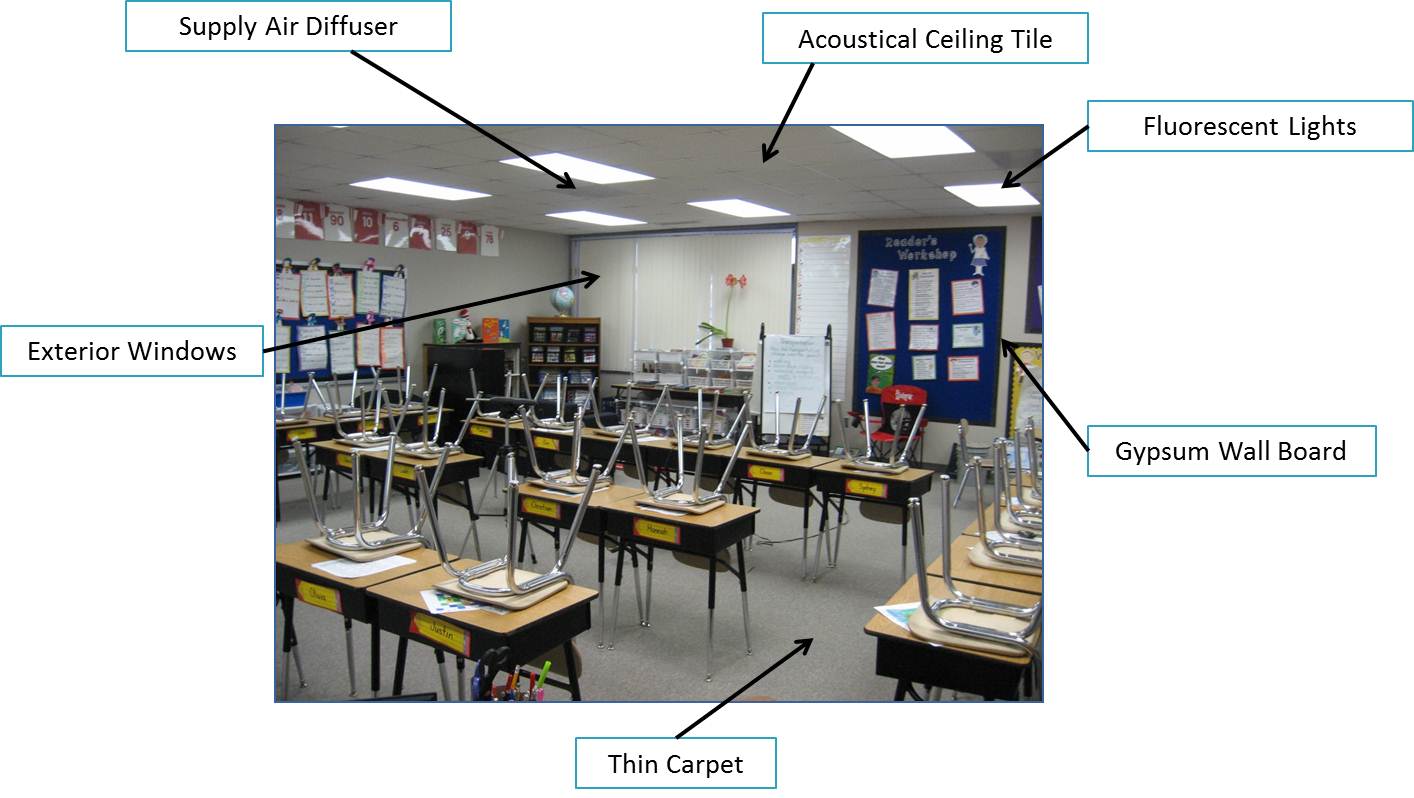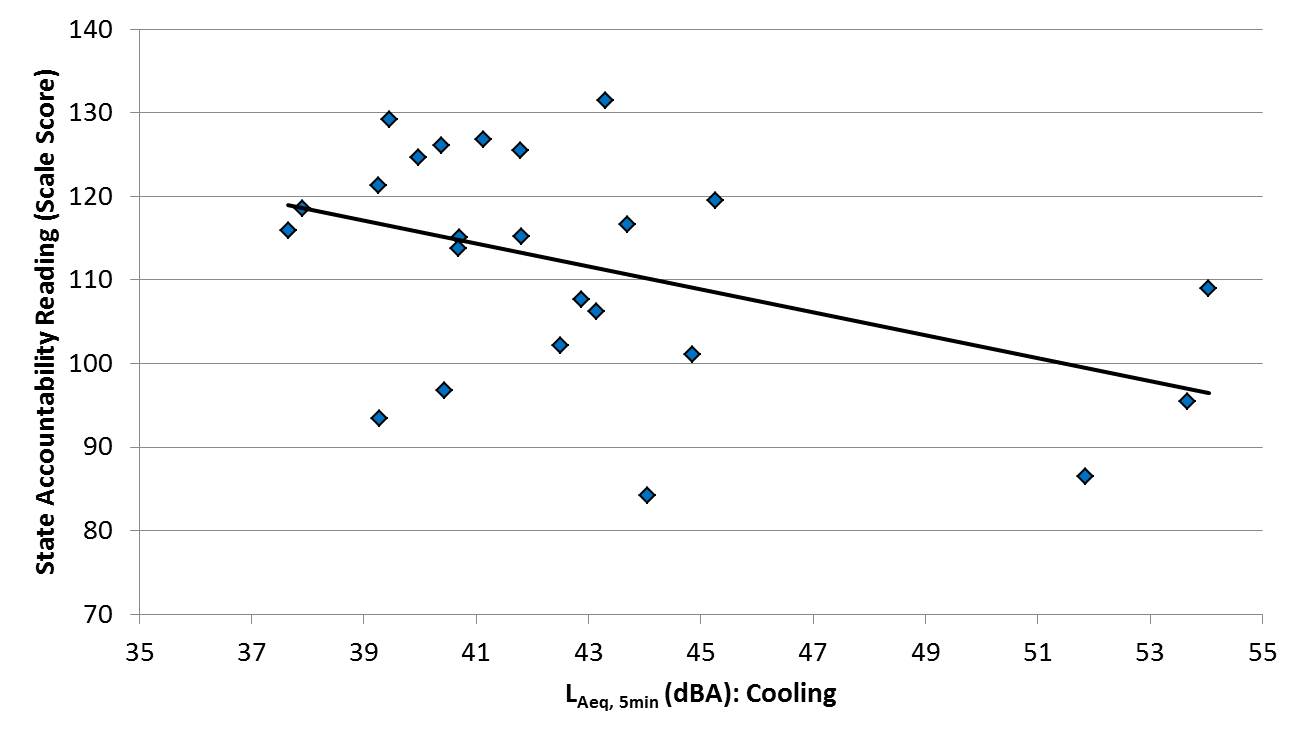
Figure 1: View of a typical elementary school classroom tested.
Lauren M. Ronsse* – ronsse.lauren@gmail.com
Lily M. Wang – LWang4@unl.edu
University of Nebraska – Lincoln
Durham School of Architectural Engineering and Construction
1110 S. 67th St.
Omaha, NE 68182-0681
*Present Affiliation:
U.S. Army Engineer Research and Development Center
Construction Engineering Research Laboratory
P.O. Box 9005
Champaign, IL 61826
Popular version of paper 1aAA9
Presented Monday morning, October 31, 2011
162nd ASA Meeting, San Diego, Calif.
Noise masking occurs when one sound covers up another sound, making it more difficult or even impossible for you to hear and understand the masked sound. Most people have experienced this in their everyday lives; one household example is when a loud dishwasher masks the sound from the kitchen TV. The extent to which noise masking in classrooms reduces the ability of children to learn the subject material is an area of concern (Bradley and Sato, 2008). One common case of noise masking in classrooms occurs when the noise generated by the building mechanical system, which provides heating and cooling for the rooms, drowns out the voice of the teacher.
Research in one public school district in Iowa showed that elementary school children tended to have lower scores on reading comprehension performance tests if they were learning in classrooms serviced by noisier mechanical cooling systems (Ronsse and Wang, 2010). The present study was carried out to further investigate the effects of background noise levels (BNL) generated by mechanical systems operating in both the heating and cooling modes on student achievement. The BNLs were measured in unoccupied third and fifth grade classrooms (67 total) in a Nebraska public school district and compared to the standardized student achievement scores from students learning in those classrooms. Figure 1 shows a picture of a typical classroom tested.

Figure 1: View of a typical elementary school classroom tested.
A comparison of the fifth-grade student state reading scores to the cooling mode background noise levels is shown in Figure 2. This figure shows that students tended to have lower reading scores in classrooms with higher BNLs. A similar negative trend was observed between the fifth-grade language achievement test scores and BNL. Statistically significant correlations were not found between BNL and the student achievement test scores for the third-grade classrooms examined, though.

Figure 2: Scatter plot and linear regression line between cooling mode BNL and State Accountability reading test scores for closed-plan fifth-grade classrooms.
The results from these studies indicate that elementary schools should be built with quieter building mechanical systems to optimize student learning in the reading comprehension and language subject areas. The Iowa study suggests that the maximum allowable classroom BNL should be 41 dBA to meet state targets for reading comprehension (Ronsse and Wang, 2010), whereas the present study found that classrooms should be designed with BNLs as low as 28 dBA to meet state targets for student reading scores . The potential negative effect of mechanical system noise masking on student learning supports the requirements in the current classroom acoustics standard, which calls for a maximum BNL of 35 dBA in classrooms with single mode mechanical systems (ANSI/ASA, 2010).
REFERENCES
American National Standards Inst. (2010). ANSI/ASA S12.60-2010. Acoustical Performance Criteria, Design Requirements, and Guidelines for Schools, Part 1: Permanent Schools (American National Standards Inst., New York).
Bradley, J. S. and Sato, H. (2008). “The intelligibility of speech in elementary school classrooms,” J. Acoust. Soc. Am. 123, 2078-2086.
Ronsse, L. M. and Wang, L. M. (2010). “Effects of noise from building mechanical systems on elementary student achievement,” ASHRAE Transactions. 116, 347-354.